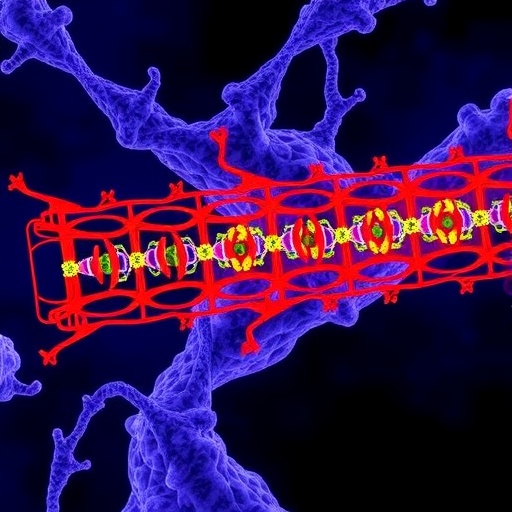
Credit: Courtesy University of Michigan Enrique Sahaguacuten, Scixel
RESEARCH TRIANGLE PARK, N.C. — Researchers working on an Army project developed nanoscale thermal switches that are key to thermal management of nanoscale devices, refrigeration, data storage, thermal computing and heat management of buildings.
The journal Nature Nanotechnology published an Army-funded study from University of Michigan researchers that showed for the first time how a nanoscale thermal switch can be built by employing nanoscale effects that arise when heat is transferred between a hot and cold nanoscale-thick membrane via thermal radiation.
In comparison to the vast array of devices, such as transistors and diodes that are available to control the flow of electricity, there exists currently very few proposals for controlling the flow of heat, especially at the nanoscale. To overcome this challenge researchers have been exploring nanoscale phenomena that may enable novel functional thermal devices.
“It’s exciting to see Army investments in basic research leading to the discovery of new effects and proof of concept demonstrations of novel thermal devices,” said Dr. Chakrapani Varanasi, a program manager at the Army Research Office, an element of the U.S. Army Combat Capabilities Development Command’s Army Research Laboratory. “These findings can have a strong impact on thermal management for next generation computing for the military.”
The Army’s network modernization strategy is designed to enable the Army to fight tonight while also actively seeking next-generation solutions to stay ahead of potential adversaries.
A 2018 discovery by the research team, which highlighted how heat is transported in preferential directions from nanoscale membranes, led Dr. Dakotah Thompson, the lead author of the 2018 study, to begin exploring potential applications.
“After some thought it became apparent to us that we could potentially create a thermal switch by controlling the emission properties of the nanomembranes by bringing a third object into close proximity of the nanomembrane,” said Dr. Edgar Meyhofer, a professor of mechanical engineering at the University of Michigan.
In order to test this hypothesis, Thompson developed a scheme where a planar object can be brought into close proximity (microns) of two co-planar membranes that were exchanging heat.
“In order to accomplish this challenging goal, I nanofabricated both suspended calorimetric devices that had unprecedented calorimetric resolution and a planar mesa-shaped object, and controlled the separation between them using a custom developed nanopositioner,” Thompson said.
From these experiments the authors could show that heat transfer between nanoscale membranes can be turned on and off by simply modifying the separation between the membranes and the planar mesa.
In order to make precise numerical predictions of the experimental observations, Dr. Linxiao Zhu, a post-doctoral fellow at Michigan, and Thompson performed detailed calculations that showed how the observations can be quantitatively related to how the propagation of light, which is the carrier of heat, from one membrane to the other is impeded by the planar mesa which can either absorb the light propagating between the membranes or reflect it away from the membranes.
Scientists at the CCDC Army Research Laboratory are closely following this research to use these developments to create novel Army relevant devices.
###
In addition to the Army Research Office, the Department of Energy also funded this study.
The CCDC Army Research Laboratory is an element of the U.S. Army Combat Capabilities Development Command. As the Army’s corporate research laboratory, ARL discovers, innovates and transitions science and technology to ensure dominant strategic land power. Through collaboration across the command’s core technical competencies, CCDC leads in the discovery, development and delivery of the technology-based capabilities required to make Soldiers more lethal to win our nation’s wars and come home safely. CCDC is a major subordinate command of the U.S. Army Futures Command.
Media Contact
Lisa Bistreich-Wolfe
[email protected]
919-549-4372
Original Source
https:/
Related Journal Article
http://dx.





